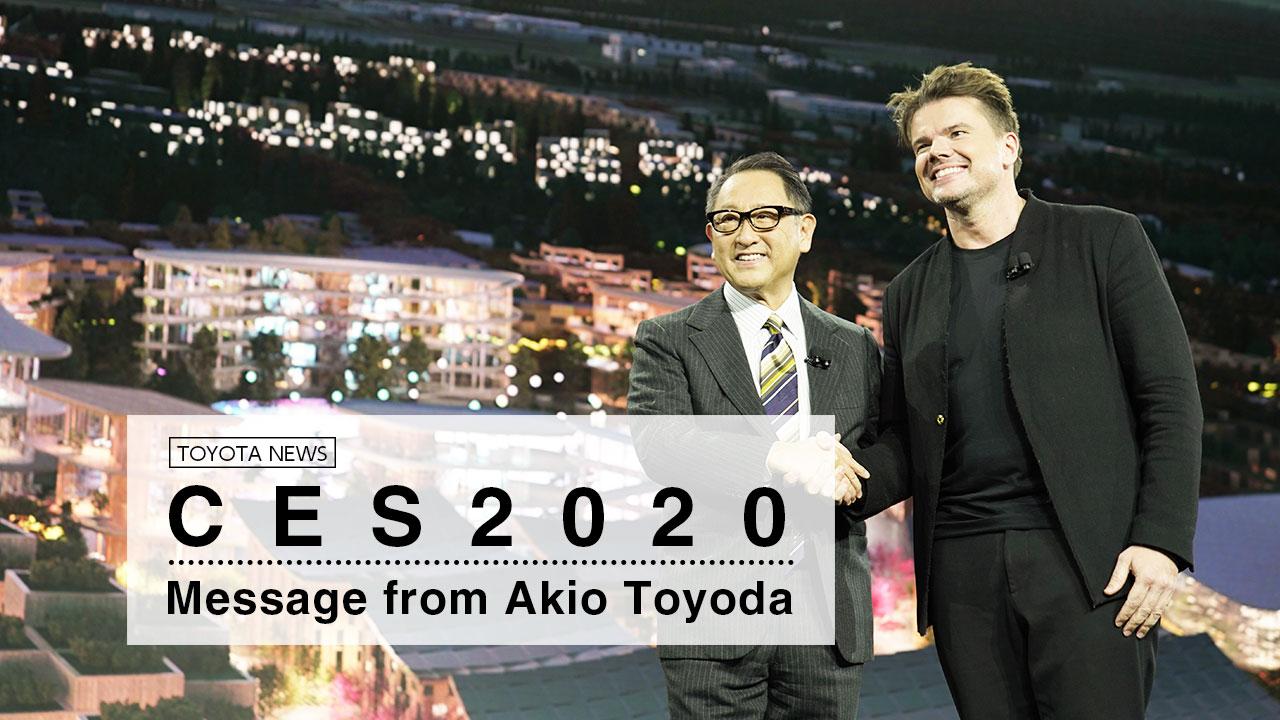
Announced at CES 2020, Akio Toyoda shares the aims of "Toyota Woven City", a perpetually "incomplete" prototype city,


At 1:00 p.m. local time on January 6, 2020, President Akio Toyoda took the stage at Toyota’s press conference to announce the outline of Woven City, a project for a prototype city of the future at CES 2020 in Las Vegas.
With reporting from Editor-in-Chief Teruyuki Kagawa, Toyota Times broadcasted the presentation live, followed by an interview with President Toyoda in the green room. The below comes from both the interview and presentation, and is being shared to help you understand President Toyoda’s message.
First, the people-centered future in the presentation given at CES is focused on an important premise held by President Toyoda, which is that when making cars, people should use what they feel, not just in data but from real-world experience gained when out on the road.

In an in-car interview by Mr. Kagawa that was released at the start of the year (What Toyota can do for the Future: A dialogue between President Toyoda and Editor-in-ChiefKagawa), President Toyoda used phrases such as “I want to leave options for the future” and “Anyone who wants, come join us.” Now, with the Woven City announcement, it is more clear what he meant – he had this new city concept at the forefront of his mind.
Post-presentation Interview
- Kagawa :
-
The content of your presentation was most surprising.
- Akio :
-
I suspect people would have thought “What will he bring two years after announcing e-Palette at CES?”
Normally, they’d probably imagine I would talk about the next generation of the e-Palette, how far it had come.
However, how that car will be used, the roads it will be driven on, and how it will create towns is what I talked about today.
You see, it’s not just automotive companies that create the future, and certainly not just Toyota. I felt we needed a platform to connect all sorts of things.
We have AI, for example. However, what we cannot forget is that we don’t want a world where we are controlled by data. We have to think about the type of city where people are placed at the heart; people determine how their data is used, and [from that] people can reach greater happiness.
This announcement was about bringing together as many people as possible with the vision to create a future together, including small, medium, and even tiny companies. To achieve this future, it was becoming clear that a city of the future might be necessary, so the decision was made to create such a city.
I normally say “roads make cars,” and we do need roads to make ever-better cars, as well as to create a future along with these cars. When we think of the future of cars, of ever-better cars, what we definitely don’t want to lose is the feeling of safety and security.
Safety and security won’t happen just by making cars better. When we realized that, the idea came to us that we could divide the roads [in Woven City] into three: paths where people walk, roads that have both people and mobility devices traveling, and roads designed for autonomous vehicle travel. By creating a city where these three roads are woven like warp and woof [using weaving terms], the result is Woven City. - Kagawa :
-
I felt that this city would become a solution for the various problems society faces as we head into the future.
- Akio :
-
I really hope that is the case.
Though this sort of project appears as one that anyone could do, the reality is that not anyone can do it.
Although it has been decided that Toyota will do this project, it is my hope that many people will see it as something interesting enough to say “I want to partner with Toyota on this project” or “This could be fun if I were to do it with Toyota.”
I’d like to work with these like-minded partners to make it a reality. - Kagawa :
-
What sort of goals do you have?
- Akio :
-
I’m often asked what sort of future I see. But as this is a topic about the future, I think it’s not for me to determine the goals, but for future people to.
With this in mind, I want to leave this city incomplete as we pass it on to people in the future.
All sorts of things will be constructed, but I want what we’re building now to always be on the cutting edge, and to always remain incomplete.
This, more than anything, is connected to the idea in the Toyota Production System that “post-kaizen is also pre-kaizen,” so that’s the idea I want to focus on as we move forward.

